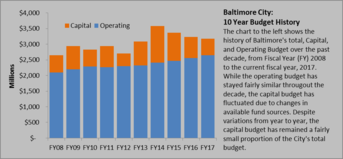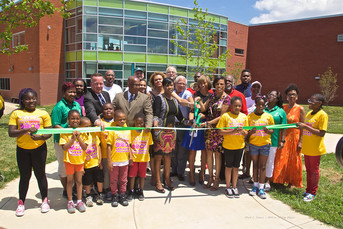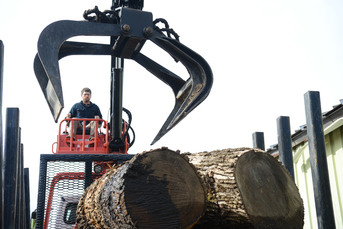|
Capital budgeting may call to mind images of accountants
hunched over desks reviewing decimal points and summing rows on a spreadsheet,
but in reality it is an important process relevant to the everyday lives of Baltimore citizens.
Each year, the Planning
Department works with the Mayor’s Office, City agencies, and the Planning
Commission to compile a six-year Capital Improvement Plan (CIP), which guides
the physical investments made by the City. The CIP results in real, tangible
projects that affect how residents and visitors experience the City, and are critical
to building Baltimore’s future.

The Capital Improvement Plan is made up of
capital projects, which are
long-term investments, usually in physical infrastructure - things like municipal
buildings, streets, sewers, parks, monuments, and bridges. Out of a total budget of $3.1 billion in fiscal
year 2017, $525 million (or 17 percent) was dedicated to capital projects.
The process of preparing the Capital Improvement Plan begins each fall, when the Planning Department solicits requests for projects from
the City’s various agencies. Throughout the winter, the Department works with City
agencies to prioritize project requests. In February, the
Department makes a recommendation to the Planning Commission on which projects
should be funded. Once approved by the Planning Commission, the Capital
Improvement Program is reviewed and approved by the Board of Finance, the Board
of Estimates, and finally City Council, where the first year of recommendations
is adopted into the City’s Ordinance of Estimates as that year’s capital budget.
You can read more about the Capital Improvement Planning process here.

CIP in Action:
C.C. Jackson Recreation Center
The modernized and expanded C.C. Jackson Recreation Center
and athletic fields in the City’s Park Heights neighborhood provide an example
of a project funded through the Capital Improvement Plan. The project was first
recommended as part of the CIP in 2012.
Over the next few years, the Department of Recreation and Parks worked
with designers and contractors to make the renovations, and in June 2016 the
facility was opened to the public. The
expanded center now includes fitness rooms, community space, computer rooms,
and an indoor gym. Outdoors, an athletic complex with new football and baseball
fields, bleachers, and lighting was developed in partnership with the Ripken
Baseball Foundation. The park was also improved with the addition of a new
playground, parking facility, basketball court, and circulation path.
Like many
capital projects, funding came from a variety of sources. The total cost for
the project was $7.4 million, with just over half coming from city fund sources
such as general obligation bonds and local impact aid. These city funds were
used to leverage other fund sources, including state and private foundation
grants. The project grew from the strategies included in the Mayor’s Recreation
and Parks Task Force Implementation Plan and provides a great example of how
the CIP allows the city to invest strategically in its neighborhoods,
businesses, and residents.
This
is the first part in a two-part series on the Capital Improvement Plan. In next
month’s Compass, learn how you can take part in building Baltimore’s future by
voting “FOR” Bond Questions A-D in November!

This fall will see the official launch of the Camp Small
Zero Waste Initiative, a wood reclamation project carried out in
partnership between BCRP’s Forestry Division and the Office of Sustainability.
The initiative targets wood waste brought daily to Camp Small, the City’s wood
debris storage yard. Instead of paying contractors to chip and haul away
this material every several months, the agencies have teamed up to create a
plan to sort out the valuable wood material, and make it available to the
public for purchase. This program will save taxpayer dollars while also
creating a new supply of unique ‘urban wood’ products, including saw-logs,
mulches, and specialty woods.
The project is made possible by a loan from the City’s
Innovation Fund. The Innovation Fund is managed by the Bureau of the Budget and
Management Research (BBMR) and provides seed money for one-time investments
that will lead to improved results, increased revenue, and/or reduced ongoing
operating costs for City services. A loan of $98,000 has enabled the Forestry
Division to hire the first ever Camp Small Yard Master, and rent mulch
screening equipment to improve and distribute ‘legacy mulch’ left at the site
from previous seasons.
The hallmark of this project, however, will be the
log-sorting operation to receive, grade and sell eligible logs to private
sawmills – reducing the cost to the City for log chipping and creating a new
source of revenue that is anticipated to support the cost of the Camp Small
Yard Master position. The first log auction is scheduled to take place in
mid-September 2016.
For more information on the program, and to sign-up to
receive notices of upcoming log auctions, visit Tree Baltimore’s website.
|